Recently presented, the Hyundai Bayon represents the “gateway” in the South Korean brand's SUV range. However, its dimensions, exterior and interior, do not put it as far from the “older brother”, Kauai, as one would expect.
Does the newly renovated model have “reasons to worry”? Or did Hyundai's new proposal come to cover a swath of the market where it doesn't reach and, thus, complement the South Korean brand's already vast SUV offer?
To discover the arguments of the new Bayon and how it positions itself not only against Kauai but also against the rest of the competition, we put it to the test in the only version available in our country (Premium) and with the only engine with which we can. buy here — the 100 hp 1.0 T-GDi paired with a six-speed manual gearbox (automatic is optional).
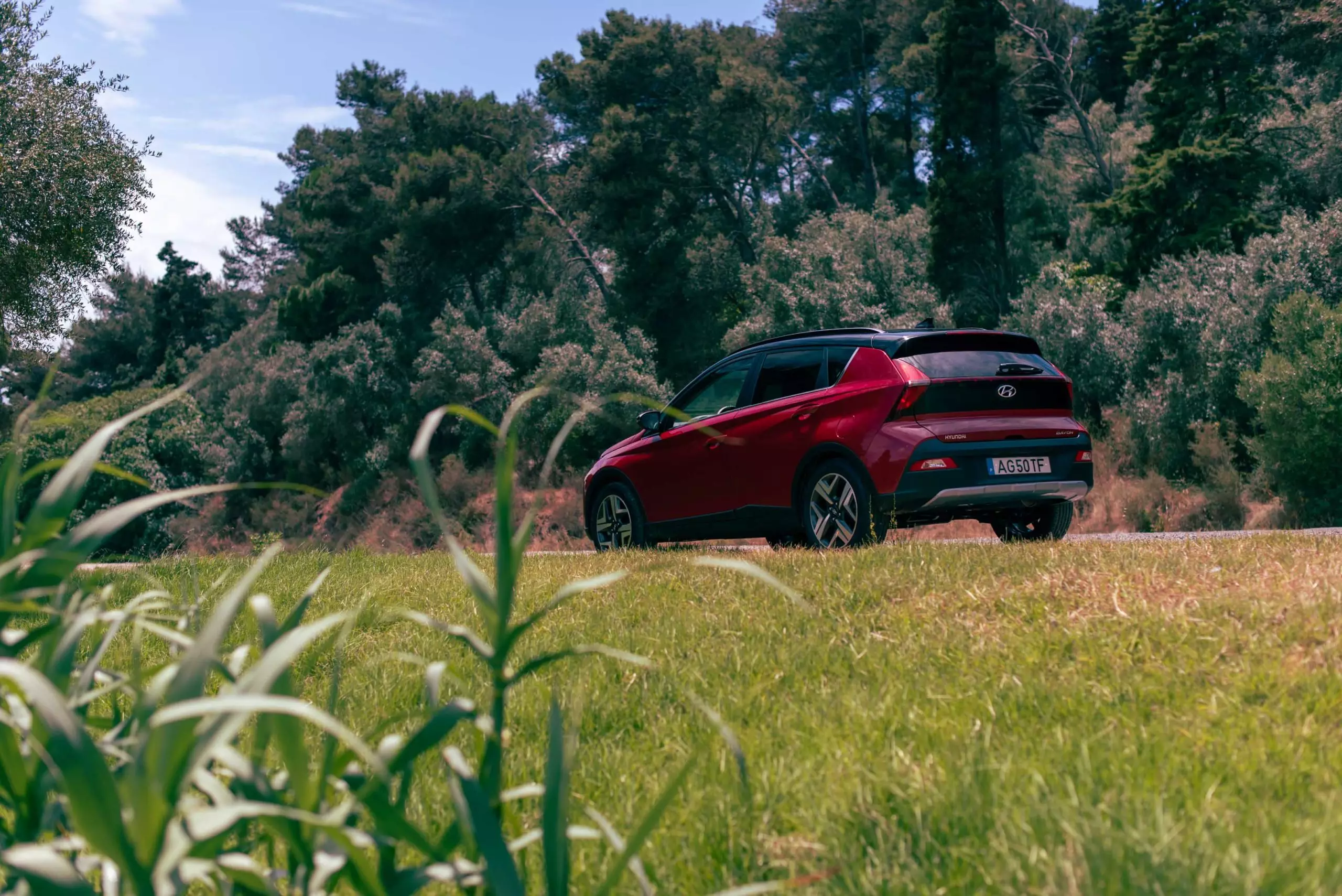
modern aesthetics
With a modern look and in line with the latest proposals from Hyundai (proof of this are the split headlamps), I must admit that I like the look something different from the small SUV with a Gallic-inspired name.
Its dimensions (4180 mm long, 1775 mm wide, 1490 mm high and a wheelbase of 2580 mm) and, above all, its proportions make me see it as the natural rival of proposals like the “cousins” Volkswagen T-Cross, SEAT Arona and Skoda Kamiq.
On the other hand, compared to Kauai, which is marginally larger at 4205 mm in length, 1800 mm in width, 1565 mm in height and 2600 mm in wheelbase, the Bayon well disguises the difference in status and, side by side, its dimensions seem effectively equals.
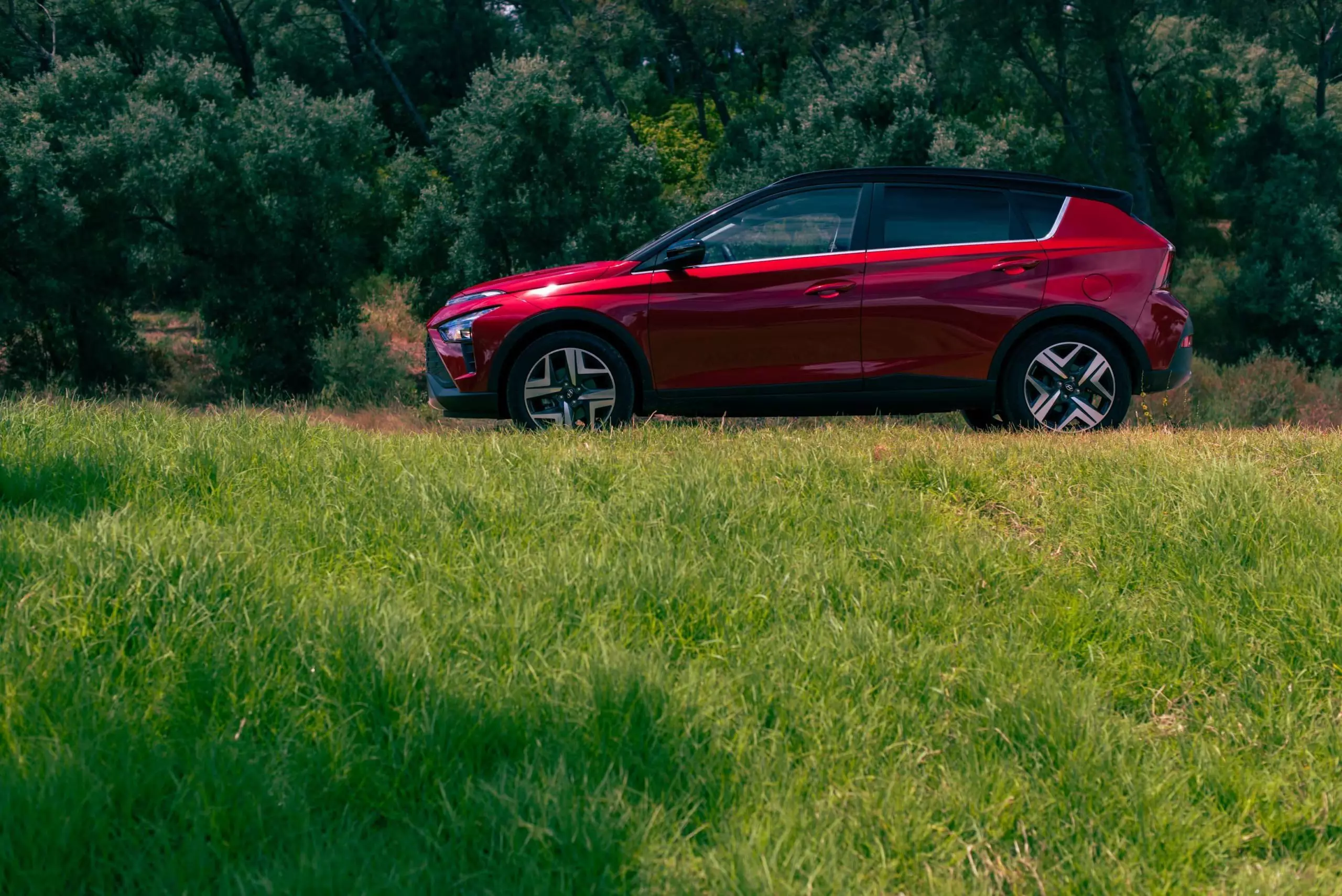
The big difference is that the shapes of Kauai give it a more dynamic imprint, while those of Bayon (in particular the rear section) lead us to a more familiar proposal. In any case, Hyundai has reason to be confident: it has two proposals of similar dimensions that manage to complement each other in covering an important segment.
Where have I seen this interior?
If on the outside the new Bayon is 100% original, on the inside there are many similarities with the model with which it shares the platform: the new i20. The dashboard design is the same as the utility and that is a positive thing.
After all, the dashboard of the i20 and now the Bayon is guided by good ergonomics (thank you Hyundai for keeping the controls for the climate control), a modern and up-to-date style (albeit very grey) and good overall quality . At this point, let me point out that there are no materials that are soft to the touch (it's a B-SUV, we didn't expect such a thing either), but the assembly appears to be robust and the parasitic noises are absent even on the worst floors.
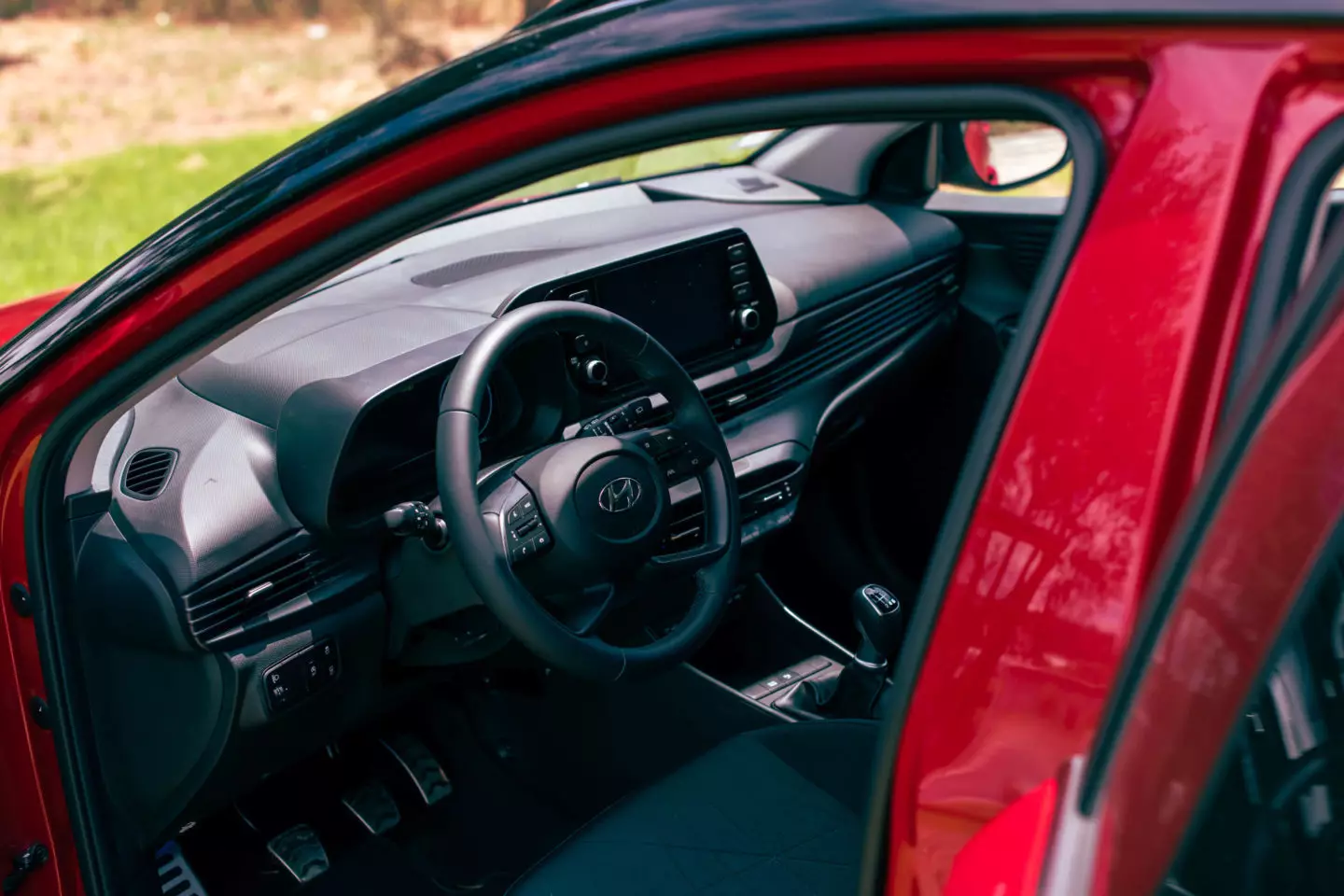
The interior is a "photocopy" of what we know of the i20.
In the chapter on habitability, the Hyundai Bayon deals and “checks” Kauai. It's true that it has less than 2 cm of wheelbase but it's no less true that in the rear seats we don't feel we have less space. In the field of luggage space, Bayon even surpasses the larger Kauai with a very interesting 411 liters of capacity against 374 liters.
Taking into account the values presented by rivals such as the Skoda Kamiq (400 liters), Volkswagen T-Cross (385 to 455 liters) or Renault Captur (422 to 536 liters), the Bayon is part of the segment average and it's just a pity do not offer modularity solutions such as the longitudinally adjustable rear seats or the double-floor luggage compartment.
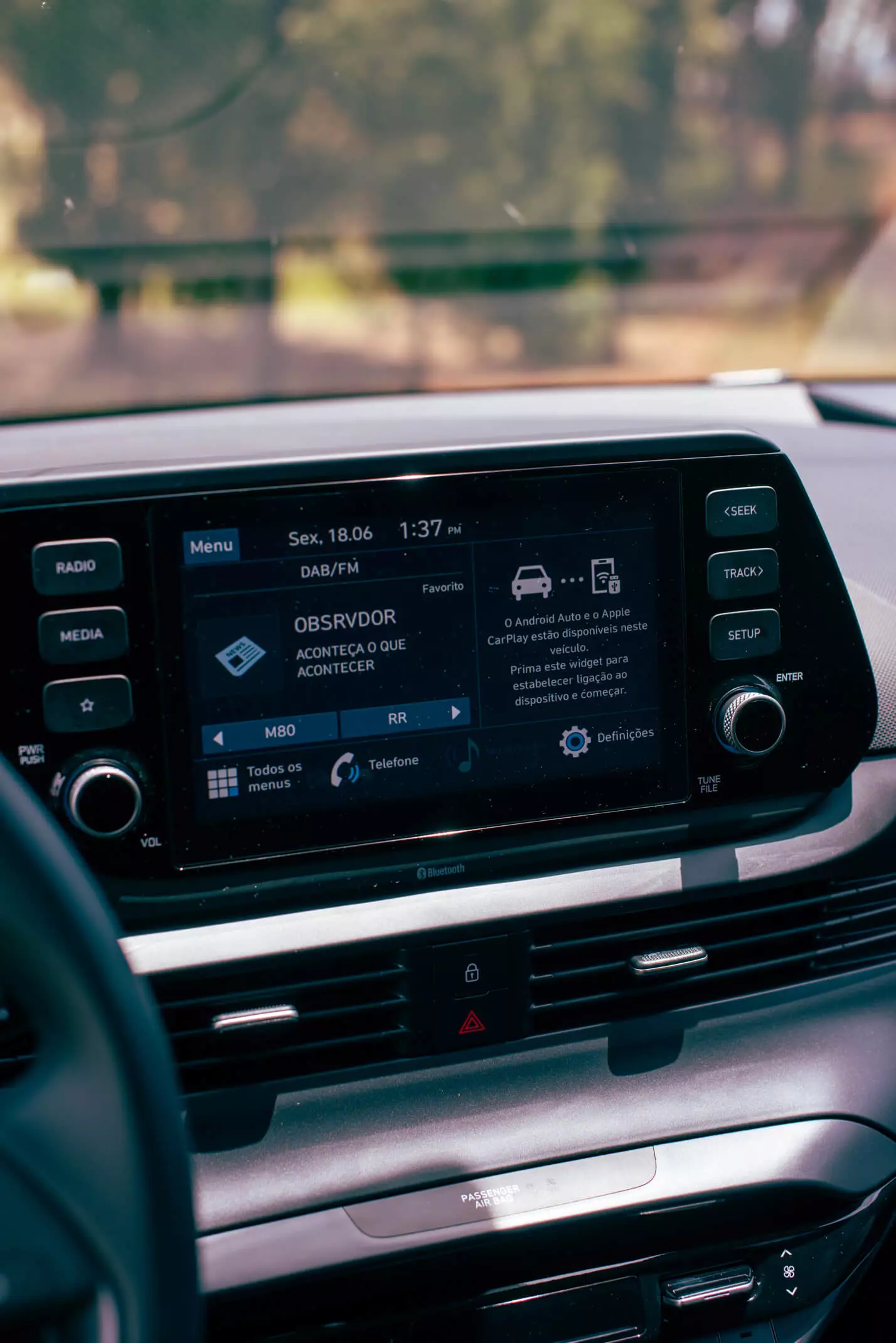
easy and pleasant to drive
The first kilometers I drove the Hyundai Bayon were in the middle of the city of Lisbon and, in the middle of the city traffic where it should circulate most, I must admit that it surprised me on the positive side. The controls are light without being amorphous, the clutch point is easy to find and everything looks well oiled and ready to face the “urban jungle”.
In these circumstances the 1.0 T-GDi proved to be more than capable of propel us out of the traffic lights with vigor and the precise and fast direction allows us to avoid all the irregularities that are “brand image” of many of our roads.
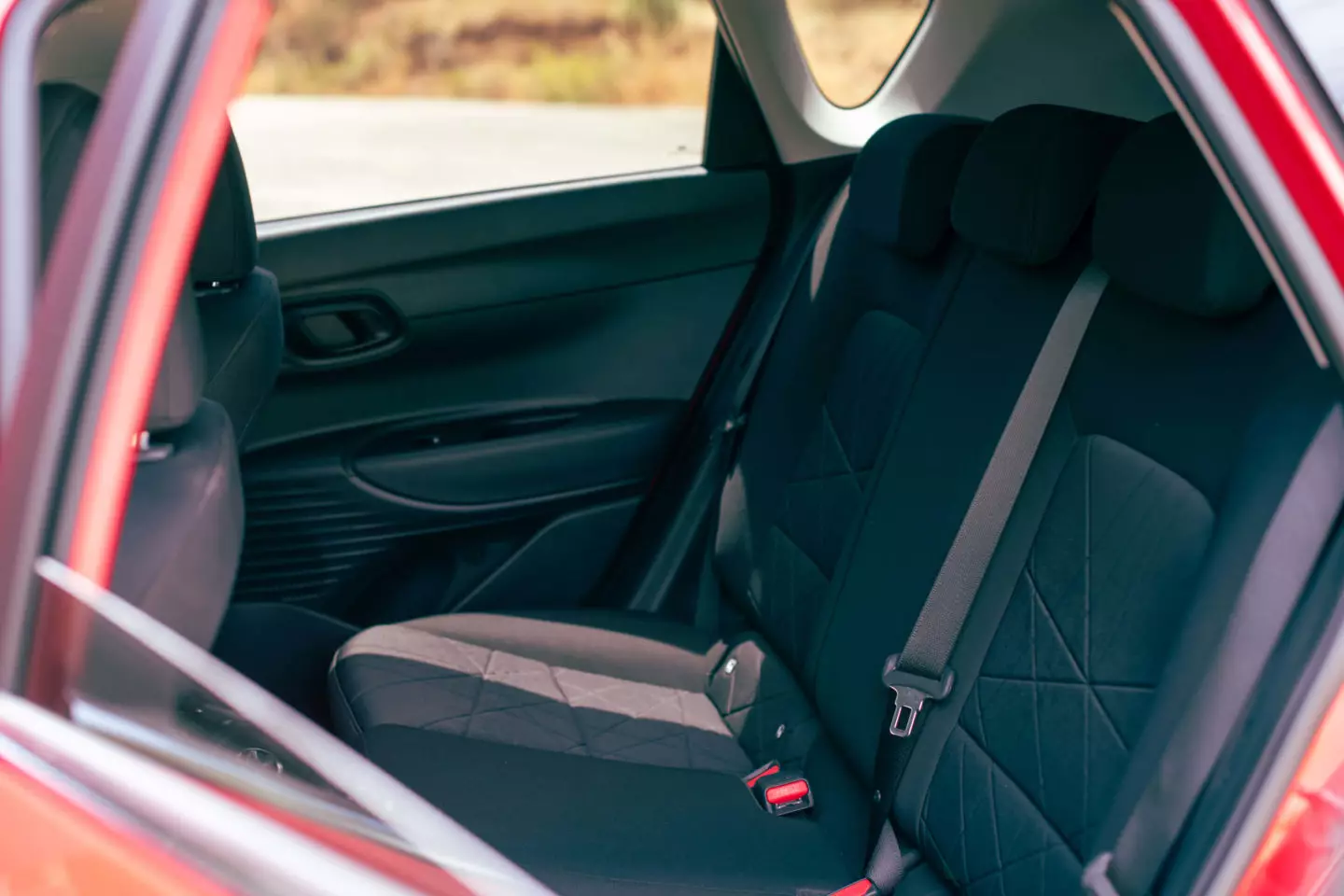
At the back the space is more than enough for two adults.
However, if in the first moments of living with Bayon I walked around town, on the remaining days its use could not have been more different. “Confined” to long runs on highways and national highways, that's when the Hyundai Bayon left me totally convinced of the good work done by Hyundai on this platform (not that I had any doubts).
Stable and resistant to (strong) side winds, the Bayon proved to be comfortable (the seats, despite the simple look, offer a very good “snap”), the cushioning combines well with “benevolence” to pass through holes without complaints with the “hardness” to contain the bodywork's movements in curves and the already praised driving in the city proves to be a good ally in the mountains.
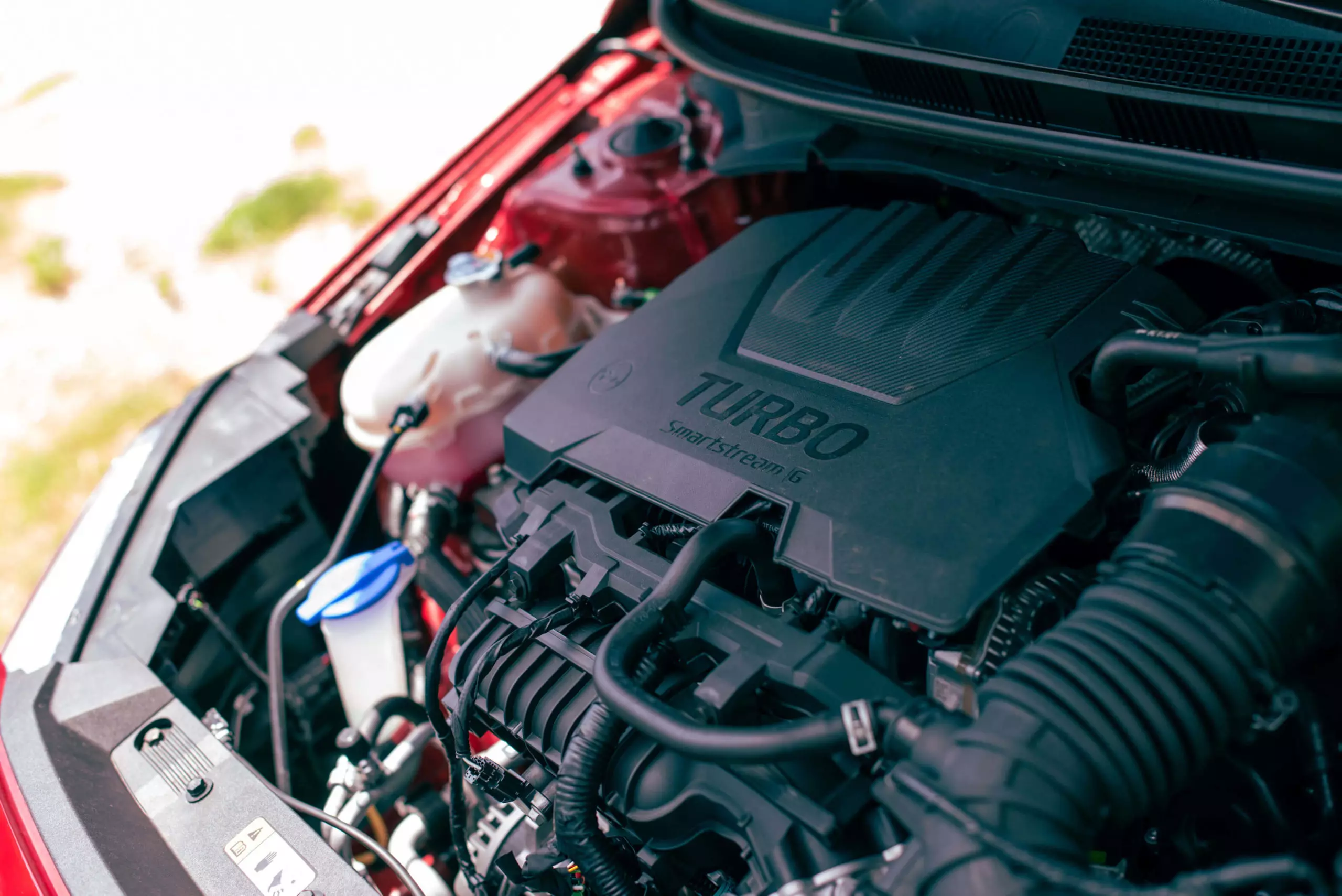
Speaking of mountain ranges, over there, Bayon sees its three cylinders “sing” happily (it has a characteristic sound, something funny), push it willingly and make it an even… amusing proposition. Of course they are only 100 hp and 172 Nm but they are good enough “for the order”, the box is well staggered and is pleasant and the chassis response seems to ask us to look for more curves.
But the best thing for young families that Hyundai Bayon is trying to seduce is perhaps none of this but its economy. With a calm drive I managed averages of 4.6 l/100 km and when I applied I saw the on-board computer set values like 4 l/100 km, something typical of a Diesel! In the city, the averages walked for an acceptable 5.9 to 6.5 l/100 km and whenever I “spiked” the 1.0 T-GDi I never saw it return averages above 7/7.5 l/100 km.
Find your next car:
Is it the right car for you?
After a few days at the wheel of the Hyundai Bayon, I was able to easily find an answer to the question I asked at the beginning of this text: no, Kauai has no reason to “worry” about the arrival of Bayon, but there are those who do: the competition .
With Bayon, Hyundai came to complete its SUV range with a proposal more focused on rational arguments than emotional ones. With a larger luggage compartment and a look that, despite being modern, has less sporty proportions than Kauai, Bayon is a proposal designed for young families, while Kauai “winks more” for those who don't mind giving up. space for a little more style.
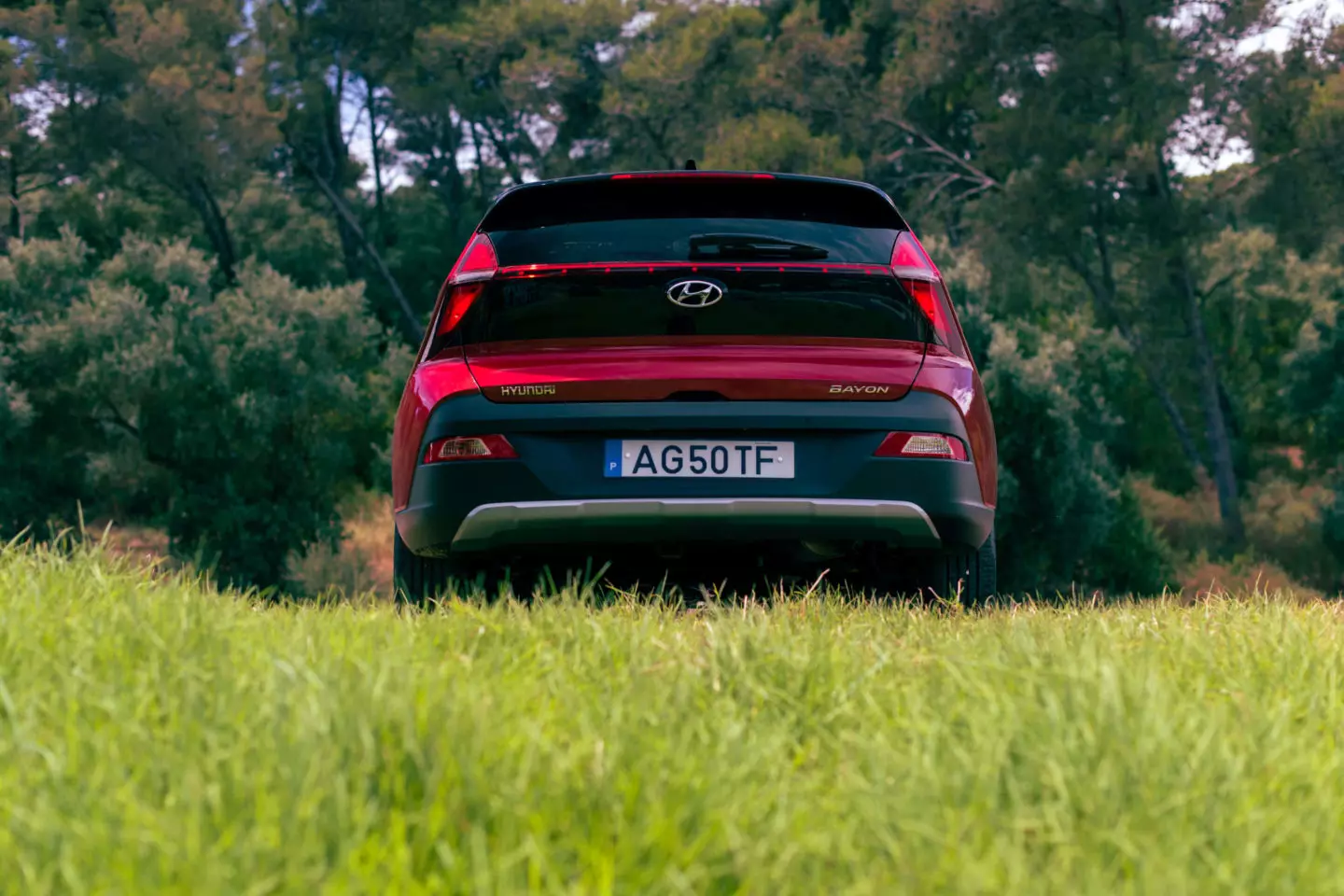
This division between "rationality" and "emotion" is evident when we look at the range of powertrains of both models (the Kauai has everything from Diesel to hybrids and electrics) and the prices of both (much more affordable on the Bayon case).
Best of all, despite having created a “rational car”, Hyundai did not fall into the temptation of boring, offering a balanced proposal, well equipped, economical, spacious and even interesting to drive. All of this makes the Hyundai Bayon an option to be taken into account in the “effervescent” B-SUV segment.
Note: at the time of publication of this article, there is a financing campaign that allows the purchase of the Hyundai Bayon for 18,700 euros.
